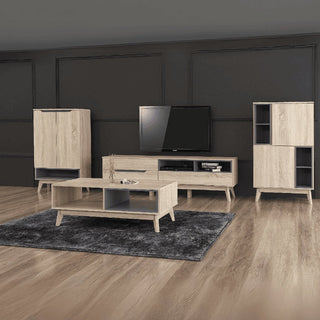Articles
-

Why Hybrid Mattresses Are Getting Popularity in Singapore
If you’ve ever tossed and turned in a mattress that felt either too hard or too soft – or one that made you sweat in Singapore’s humid nights – a...
-

How to Tell If Furniture Is Good Quality (Even If You’re Not an Expert)
If you’ve ever strolled into a furniture store and found yourself scratching your head trying to decide if that coffee table priced at $200 is actually better – or just...
-

The Ultimate Sofa Buying Guide: How to Choose the Right Sofa Size for Your Living Room
Choosing a sofa sounds simple… until you actually have to do it. It’s one of the biggest furniture decisions you’ll make because the sofa sets the mood for your entire...
-

How to Choose the Perfect Sofa: The Ultimate Sofa Buying Guide for 2025
Choosing the right sofa is one of the most important decisions you’ll make when furnishing your home. A sofa isn’t just a piece of furniture – it’s where you unwind...
-

Why Investing in Quality Furniture Saves You Money in the Long Run
Furnishing a home is one of the biggest steps people take when creating a comfortable living space. Whether you’re moving into a new apartment, upgrading your old pieces, or simply...
-

Custom vs Ready-Made Furniture: How to Choose the Best Fit for Your Singaporean Home
Designing a home you truly love starts with one major decision: custom furniture or ready-made furniture? Whether you’re furnishing a cosy BTO, a compact condo, or a spacious HDB, understanding...
-

Hybrid Mattresses vs. Spring vs. Memory Foam Mattresses: Which one is the Best?
We all know that a good night's sleep is like hitting the reset button for our bodies and minds because that rejuvenating experience leaves us feeling ready to conquer the...
-

Timeless Furniture Design That Makes Every Room Feel Effortlessly Beautiful
There’s a quiet magic in home filled furniture pieces that never seem to age. A smooth wooden table that still gleams after years of family meals. A Chesterfield sofa that...
-

How to Choose the Right Furniture for Your Home: Smart Interior Design Tips for Singapore Homeowners
Choosing furniture for your home should be fun, not stressful. But with so many styles, materials, and trends out there, it can feel overwhelming. Should you go for that minimalist...
-

What Is Modern Furniture Design? A Complete Beginner’s Guide (2025)
If you’ve ever walked into a beautifully minimalist home and wondered, “How do they make it look so effortlessly put together?” – chances are, you’re looking at modern furniture design in...
-

Memory Foam Mattresses: The Secret to a Good Night's Sleep in Singapore
Memory foam has revolutionised the mattress industry, providing a comfortable and supportive alternative to traditional spring mattresses. Memory foam is a viscoelastic material that molds to your body shape and...
-

Megafurniture.sg: Your One-Stop Shop for Quality Furniture
If you're in search of high-quality furniture that can transform your home into a comfortable and stylish living space, then Megafurniture.sg is the perfect destination for you. As one of...



















